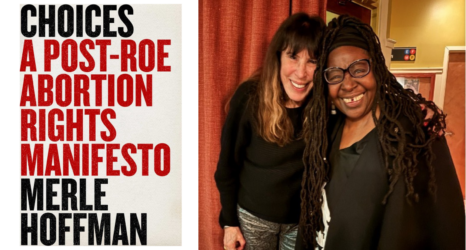arching down Fifth Avenue in New York last weekend with tens of thousands of humans in various shapes and sizes brought two overlapping sensations.
One has to do with my memory of marching as a child in 1968 with the Poor People’s Campaign that organized marches on Washington, D. C. Then, as now, buses were commissioned to deliver marchers, and then, as now, the reflecting pool and the space of the National Mall became so overwhelmed with people that feeling crowded was the most immediate sensation and obscured the initial purpose of arriving there. The vicinity of vision was necessarily limited to flanking bodies.
In the wake of the assassination of Martin Luther King, Jr., who had been shot only a few weeks before the campaign that he had originally spearheaded, the marchers included faces filled with grief and rage about the need for the protest. That is, the original impulse to urge economic justice was almost overwhelmed by the fury felt by some marchers about racial injustice. That march took place in the summer, and I remember the desire to cool off in the waters of the reflecting pool. My mother reminded me how I insisted on spending my own allowance on the bus ticket. I recall how sad I felt, as a child of ten, that the United States had so much political grief.
The first overlapping sensation is physical memory. After the Women’s March in New York, I was mostly aware of how much my feet hurt. Pressed tightly against other bodies for five hours, there was never a chance to sit. And as to marching, well, it might have been shuffling, but it more likely appeared as a crowded form of standing. The warmth of other bodies was a help as the wind picked up. The warmth of smiles was a help as great shouts, like waves in a football stadium, passed through the crowd. The smiles were not returned by the forlorn faces of drivers who tried to escape down side streets but were completely swamped by a tsunami of bodies that spilled over every available surface. As I read the banners around me, I noticed a young man carrying roses and asked him what they stood for. He gave me one. They stood for the act of giving joy, he said.
The second sensation, also familiar, is about a confusion of purpose. In New York, as in many cities across the country, the flurry of signs held high by marchers showed bewildering declarations of solidarity that spoke to a throbbing desire to belong. However specific or broad the cause to which each person or group declared allegiance could not matter as much as bringing this desire to the larger crowd. And the larger the crowd the greater the joy, the more irrelevant it felt to feel isolated from each other. In the wake of the march, the finger pointing began. White women, said some critics, had no idea of what it meant to have solidarity with Black Lives Matter, with immigrants, with queer sexuality, with the poor. And besides, some said, it was white women voters who had determined the result of the election. What right did they have to protest now that it was too late?
My strongest memory from 1968, an inexorable sensation of confused sympathy, is that, as an idealistic child, I thought my desire to fight injustice could be seen on my face—and, of course, in my body—because I had showed up in support of this march and this crowd. Since I was an idealistic young white child, however, my face also attracted glares. Being singled out as an enemy because of my race was unfamiliar to me, and yet it served as a useful lesson for the years ahead.
Almost 50 years after the Poor People’s Campaign, with the ferocity of historical lessons from the 1960s still to be learned, the hardest message is how to produce solidarity from times of disunity. We still need to learn how to march together.
Republished with permission from the Huffington Post.
Shirley Samuels is Professor of English and American Studies at Cornell University. She is the author of Reading the American Novel, 1780–1865 (2012), Facing America: Iconography and the Civil War (2004), and Romances of the Republic: Women, the Family, and Violence in the Literature of the Early American Nation (1996). Samuels edited The Culture of Sentiment: Race, Gender and Sentimentality in Nineteenth Century America (1992), the Blackwell Companion to American Fiction, 1780-1865 (2006), and the Cambridge Companion to Abraham Lincoln (2012).





